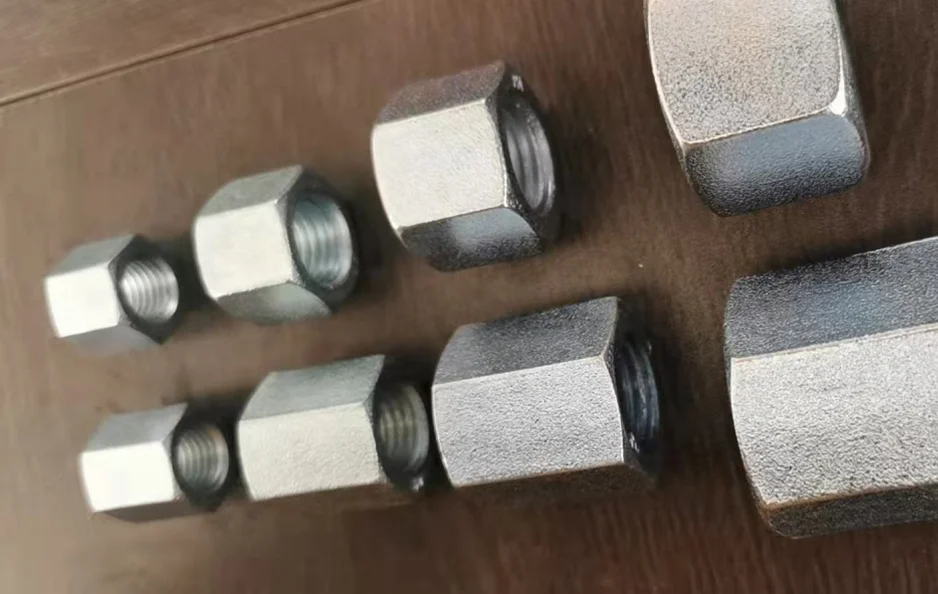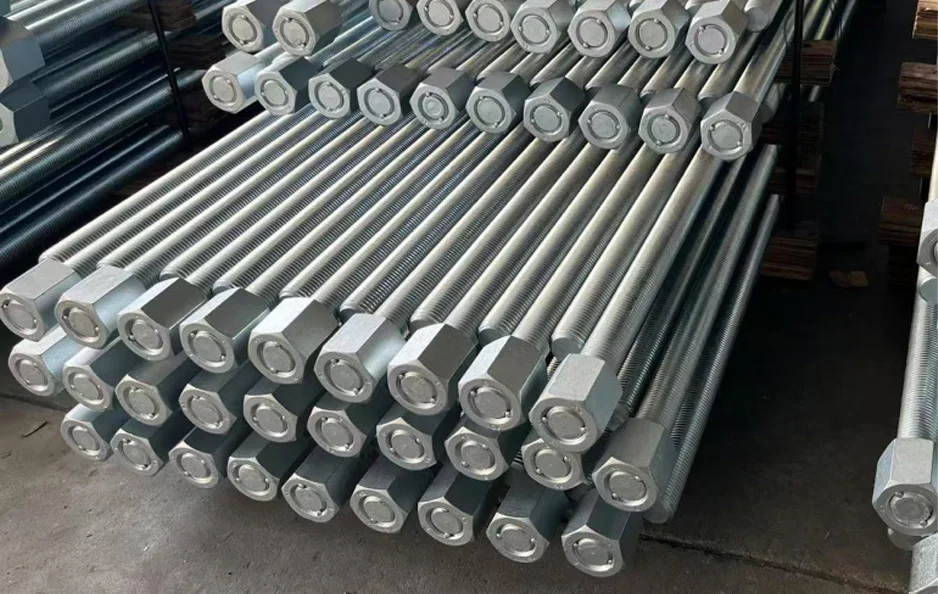
Picture yourself at the core of an industrial setup. Heat exchangers hum reliably, moving heat efficiently while handling intense pressures and harsh fluids. Bolts play a vital role here, acting as silent champions that keep everything secure. As someone with years of expertise in thermal systems, I can assure you that picking the right bolt is more than technical—it protects your operations from breakdowns and costly pauses. That’s why professionals trust specialists like Grano, a top name in heat exchanger parts, offering bolts crafted for strength and longevity. Their range, from sturdy carbon steel to advanced alloys, fits perfectly into your systems, backed by strict testing to meet global standards. Whether upgrading an old setup or starting fresh, Grano’s bolts deliver durability and value. Check their catalog to see how these components boost reliability affordably. Let’s dive into the details of what makes these fasteners essential for your operations.
Bolt Materials: Picking the Best Base for Strength
Your plate heat exchangers need to perform consistently in tough conditions. The bolts holding them must be equally tough. The material you choose shapes how well they resist wear, stress, and time.
Common options include carbon steel, which is budget-friendly and strong for standard tasks. Stainless steel shines in wet or chemical-heavy settings, resisting rust effectively. Alloy steel offers extra toughness for extreme loads. Each suits specific needs—carbon steel works for routine industrial jobs, while stainless types like 304 or 316 thrive where acids or salts could damage weaker metals.
Choose based on key factors. The fluid in your exchanger affects corrosion resistance—pick stainless for acidic conditions. High pressures need strong alloys to avoid bending. Temperatures over 200°C call for heat-tolerant grades to stay strong. Harsh environments, like salty marine air, demand coated or specialized alloys. Matching materials to these factors reduces risks and extends bolt life. For example, in systems with varying pressures, alloy steel gives you the strength you need without overcomplicating things.
Now that you know about materials, let’s explore how they support the bolts’ critical roles. A smart material choice ensures your exchanger stays reliable and efficient.
The Vital Role of Bolts in Plate Heat Exchangers
Bolts do more than hold parts together. They keep your heat exchanger running smoothly. You need leak-free performance and steady heat transfer. Bolts make that happen by maintaining balance.
First, they ensure tight seals and overall stability. Bolts press frames together, sealing gaskets to prevent leaks. This keeps fluids separate and maintains efficiency. Even small gaps can cause energy loss or fluid mixing.
Second, they spread stress evenly across plates. Uneven tightening leads to warping or hot spots, which hurts performance. Precise bolting protects plates from wear and extends their life.
Lastly, bolts make maintenance simple. Quick-release designs let you open the exchanger for cleaning or plate swaps, cutting downtime in your workflow.
These functions connect to how bolts are made. Strong materials need precise manufacturing to perform well. Let’s look at the tools that shape these reliable fasteners.
Tools Needed for Bolt Production

Making bolts that meet your exchanger’s demands requires advanced equipment. This ensures the precision and quality you rely on. The right machines turn raw materials into dependable parts.
Lathes and CNC machines are key. They shape metal bars into accurate shanks and heads. CNC tools automate the process for consistency, perfect for large projects.
Thread rolling machines form threads by pressing metal, making them stronger than cut threads. This helps bolts resist wear under heavy torque.
Heat treatment furnaces harden and temper bolts, balancing strength and flexibility. Surface treatment systems add coatings like zinc or PTFE to fight corrosion.
These tools ensure bolts can handle your system’s challenges. Next, we’ll see how these machines work together in a clear process to create bolts you can trust.
The Step-by-Step Bolt Making Process
Building bolts follows a clear, step-by-step method. Each step ensures quality, which matters to you because it affects performance in your systems.
Start with raw material prep. Workers check and cut metal bars to match your needs, ensuring the alloy is pure.
Next comes blanking. Machines cut bars into short lengths for forming. Heading equipment then shapes bolt heads, setting a solid base.
Shaping follows. Lathes trim the shank, and rolling forms threads with precise depth and spacing.
Heat treatment strengthens the metal. Furnaces heat and cool bolts to lock in durability, matched to the material type.
Surface treatment adds protection. Zinc coating or polishing creates a barrier against rust and harsh chemicals.
Finally, inspection and packaging ensure quality. Workers check threads, test strength, and pack bolts to arrive undamaged.
This process creates reliable bolts. Quality checks at every step catch issues early, ensuring the fasteners you use are flawless.
Strict Testing and Quality Checks
You expect bolts to be reliable, and that requires thorough testing. These checks confirm the bolts meet your needs for safety and long-term use.
Thread accuracy tests use gauges to check pitch and angles. This ensures bolts fit smoothly without jamming.
Strength tests measure tensile and hardness properties. These mimic the forces you’ll apply, confirming bolts won’t fail.
Size checks verify dimensions like length and head shape. This ensures bolts fit your exchanger perfectly.
For coated bolts, tests like salt spray check how well coatings stick. This prevents peeling in tough conditions.
These steps ensure every bolt is consistent. But even with great testing, real-world issues like rust can appear. Let’s explore how to handle those challenges.
Solving Common Bolt Problems
Even well-made bolts face issues in use. You’ll likely see these in your systems, so knowing fixes keeps things running smoothly.
Rust is a big concern, especially in acidic or salty settings. It weakens threads and grip. Use duplex stainless steel or apply coatings regularly. In submerged systems, add cathodic protection.
Loosening happens with vibrations, causing pressure loss. Use locking nuts or thread adhesives to keep bolts tight. Check and retighten regularly.
Breakage comes from too much force or wear over time. Choose stronger alloys and tighten to recommended specs to avoid stress.
To improve, monitor bolts with strain gauges and use self-locking designs for moving systems. These steps fix issues and prevent them, leading to better choices for your needs.
Applications and Smart Selection Tips
Your bolts must fit the specific needs of your industry. Different conditions require tailored choices to save money and boost efficiency.
In chemical plants, harsh fluids need rust-resistant stainless bolts. Add fluoropolymer coatings for extreme pH levels.
Marine systems face saltwater, so use brass or titanium alloys to stay strong in rough conditions.
Energy plants, like power stations, need high-strength alloys for steam lines under high pressure and heat.
HVAC setups work well with affordable carbon steel and zinc coatings for moderate conditions.
When choosing, consider your system’s demands. Low-pressure cooling? Carbon steel is enough. Hot oil systems? Pick alloys. Think about maintenance cycles—frequent openings need easy-thread bolts. Check standards like ASTM to guide your picks.
In summary, the right bolt makes your exchanger work better. Explore options like the bolt designed for these challenges. Use them to make your systems stronger and more reliable.
FAQ
Q: How often should I check bolts in a plate heat exchanger?
A: Inspect visually and test torque every six months. In high-vibration setups, do this every three months to catch wear early.
Q: Can I use different bolt materials in one exchanger frame?
A: Stick to one material. Mixing causes uneven expansion with temperature changes, leading to leaks or stress.
Q: What’s the best torque for tightening bolts?
A: Follow your exchanger’s guide, usually 20-50 Nm for M10 bolts. Use a calibrated wrench to tighten evenly without damage.






